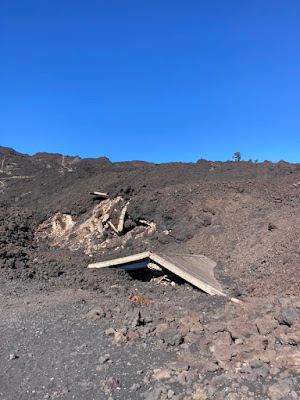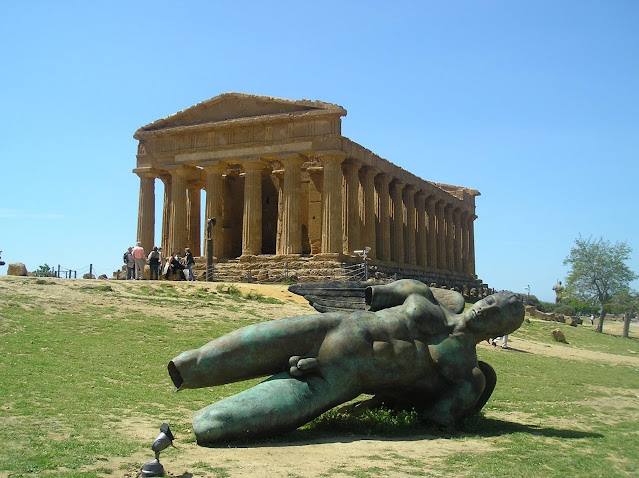Excursion to Etna North 🌋
Mount Etna is full of mysteries and legends. The first Greek settlers named the volcano Aetna and thought of it as the home to Hephaestus, god of fire, who used its flames and lava to forge Zeus’s thunderbolts. Etna is described in the book of myths as “the forge of the gods”. To the Sicilians it is known as Mongibello (Beautiful Mountain) a word that derives from Arabic times.
Visitors, both local and international, are instantly charmed by the volcano and visit daily to this magical part of Sicily.
Since the Grand Tours started in 1680 Mount Etna was the “must see” attraction of visitors to the island and has been enjoyed by such notaries as Goethe, Byron and Maupassant, as it had already been by the Greek philosopher Empedocles and the Emperor Hadrian. This legendary area is a magnet for visitors looking for excitement and dramatic landscapes.
Mount Etna is the highest volcano in Europe. It extends for approximately 1250 square km and reaches a height of approximately 3350 metres. For its repeated eruptions over many years it can be considered to be one of the most active volcanoes in the world. From its height Mount Etna dominates the island, the three surrounding seas and the tip of the Italian mainland.
The volcano offers varied and captivating sightseeing opportunities with the added view of external craters, lava flows, forests, citrus groves, fruit orchards and vineyards and there are many ways to enjoy and experience Etna.
One of the most popular excursions and destinations is to Etna Sud, the south side of the volcano. Most escorted excursions head here to the south side where you can reach the highest part of the volcano from Rifugio Sapienza, which is a tourist platform at an altitude of 1,910 meters. From here you can reach the summit craters on foot in the company of a qualified Etna guide or onboard the special off-road minivans that will drive you up to an altitude of 2,940 meters after a short ride in a cable car. Trekking with a qualified guide is possible around the main craters at an altitude of 3330 meters and where you can look deep into the craters.
Having a home in Giardini Naxos we are lucky to be blessed with amazing views from our roof terrace of Mount Etna and in fact when we first viewed our house we were told that Etna looked so close that if she erupted we would be able to make toast. We have experienced many eruptions and it is amazing to sit and watch bright orange lava flowing down the slopes as lava fountains shoot up into the air in the distance in the night sky. The first thing we do in the morning on a cloudless day is to see what kind of mood Etna is in.
The view we can see from our home is Etna Nord, the northern side.
We always love a drive to visit our volcano with our dog Daisy and we have experienced Etna in many ways. It takes us about one hour to reach Etna Sud but one glorious sunny autumn day last October we decided to drive up to Etna Nord for a different point of view as it was an area yet to be discovered by us.
From Giardini Naxos we drove towards the town of Linguaglossa on the northern slopes of Etna. The town was founded on an old lava stream in 1566. Linguaglossa is the gateway to Etna Nord and to the many volcanic vineyards in the area. The name literally translates to "Tongue Tongue" from Latin Greek due to the strips of lava it is built on and the formation of the surrounding pine forests. Driving past the Circumetnea train station in the town and across the rail tracks we headed towards the northern volcanic pine forests.
When you drive around the slopes of Etna you will find yourself having to stop at many railway crossings most of which are still operated by hand, the little train that comes tumbling past is the Circumetnea train which has been going around Etna since 1895. The Circumetnea is a narrow gauge railway of 110 kilometres that starts in Catania and ends in Riposto. It passes through scenic and rural landscapes with Etna's summit forever visible throughout the journey. It is a perfect alternative way to enjoy the volcanoes beauty and crosses citrus orchards and olive groves, lava flows, small towns, vineyards and breathtaking volcanic countryside.
From Linguaglossa we drove up the volcanic slopes along the Mareneve Road, Mare translates to sea and Neve is snow, which runs through the Ragabo forest, towards Piano Provenzana. The Ragabo forest is the highest pine forest in Sicily and an area of outstanding beauty and a perfect spot for a picnic.
Piano Provenzana is a tourist area at an altitude of 1,900 meters which offers unique views of the north eastern coastline and is a lot more quieter and natural with less tourists than Etna Sud but still has great amenities to enjoy Etna.
The last great eruption on the north side of Etna was in 2002. The eruption of 2002 changed everything and destroyed buildings including hotels and restaurants and also the ski lift. The area is still being rejuvenated.
It is possible from Piano Provenzana to reach Etna up to 3,000 meters on 4 x 4 off road buses and another fabulous experience is to trek to the craters of the 2002 eruption. Also here you can see the Observatory Pizzi Deneri which is a volcanic monitoring centre where scientists and volcanologists come to study Etna and her volcanic activity.
In winter Piano Provenzana becomes a ski resort. There are four ski slopes that offer a unique experience of skiing or snowboarding on an active volcano overlooking the sea. If you are not a skier or snowboarder then you can go on a wintery hike wearing snow shoes.
After arriving and parking our car we took in the surrounding views which looked like a lava desert. Daisy was absolutely fascinated by mountain goats who were walking across the lunar like landscape. Daisy loves goats and cries with excitement when she sees any especially if she is in the car with us and we get caught in a goat herd in country lanes. We managed to prise her away from her new friends and decided to go for a short walk and headed for the Monte Conca trail.
We walked along the 2002 lava flows where we could see what is known as "the stone forest" so named by the formation of pine trees which were dried by the lava but not burnt, their grey colour gives them the look of trees made of stone. With a smoking crater in the distance we passed volcanic rock formations created by the various eruptions on the north side in different centuries where we discovered and were amazed by the remains of structures that were completely destroyed under the lava of 2002 and Daisy made herself another new friend, a lovely Etna guide who was hiking with some clients. Despite the arid landscape nature always finds a way and we spotted some Etna broom.
Genista Aetnensis, the Mount Etna broom, is a species of flowering plant bright yellow in colour. It is a shrub that can become quite large and is native to Sicily where it thrives on sunny open landscapes and poor, stony soil.
After our short walk, as Daisy's little legs were getting tired walking on volcanic terrain, plus it is safer and more sensible to walk with a guide, we headed back to the car but not before enjoying a coffee from one of the food and drink chalets amid volcanic views and I cheekily picked up a couple of lava rocks to bring back to London because they make excellent subjects for our friends children to take to school for "show and tell". I once actually had to go into a school to tell a captivated young audience about life living with a real volcano.
As we drove back down the volcano through the pine forests we spotted the trailer for alpaca trekking with it’s cute woolly occupants disembarking for a volcanic trek with some happy guests. Alpaca trekking is a wonderful way to experience Etna Nord. Watch this space.
Once back home in Giardini Naxos we sat on our roof terrace with a glass of Etna wine and our binoculars and looked up towards Etna Nord, as we always do, but this time we could identify where we had been walking just a couple of hours earlier with Daisy.
How cool is that?
🌋🌋🌋
I have some wonderful Qualified Etna Contacts for Trekking and Volcanic Experiences
Please do ask me for Recommendations
IMPORTANT INFORMATION: Never go hiking or trekking on Mount Etna alone unless you are experienced hikers, go with a trained guide. Wear different layers of clothing so you can adapt to the many sudden changes in the weather, one minute the sun can be hot then the next minute a strong icy wind can blow down from the summit. Wear sturdy footwear for the harsh lava terrain. Take plenty of water and a spirit of adventure.
For Alpaca Trekking on Etna Nord
follow Luciano Domanti
Instagram www.instagram.com/lucianodomanti
Facebook www.facebook.com/domantiluciano/
🌋🦙🦙🦙
Photo Gallery
I hope you have enjoyed
my Etna inspired Blog post?
If you enjoyed this one then you might love these ones from my Blog archive too
22 Ways to Experience Etna https://whitealmond-privatesicily.blogspot.com/2018/09/22-ways-to-experience-etna.html
Mount Etna by Jeep with Tripping Sicily https://whitealmond-privatesicily.blogspot.com/2017/01/mount-etna-by-jeep-with-tripping-sicily.html
Excursion to Etna South https://whitealmond-privatesicily.blogspot.com/2015/11/excursion-to-mount-etna.html
A Volcanic Wine Adventure https://whitealmond-privatesicily.blogspot.com/2022/09/a-volcanic-wine-adventure-in.html
Mount Etna & The Legend of King Arthur https://whitealmond-privatesicily.blogspot.com/2019/01/mount-etna-legend-of-king-arthur.html
🌋🌋🌋
Thank you for following me on my
White Almond Sicily Travel,
Food and Lifestyle Blog
Established 2014
as seen in
The Essential Guide to Visiting Sicily
by Essential Italy
Sicily Weddings and Honeymoons
by Wedaways©
and the romantic novel
My Lemon Grove Summer
by Jo Thomas
🌋
For NEW Blog updates and all things Sicilian
Follow me on The Socials @
Instagram www.instagram.com/whitealmondsicily/
Twitter www.twitter.com/sicilyconcierge/
You can also Connect with me on Linkedin
For Travel Tips, Trip Advice and Recommendations
Contact me via my Social Media pages
Love Sarah
xXx










































